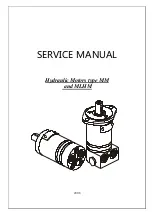
Group 22
Service procedures - cooling system
145
Coolant, filling
To ensure excellent cooling of the engine, it is vital to check
that the correct coolant volume is added when coolant is be-
ing replaced. Coolant levels that are too low can cause the
engine to be damaged due to overheating (piston seizure).
Since the coolant volume varies between various engine
types and installations, we recommend that a sufficient vol-
ume of coolant (fresh water with glycol, or anti-corrosion ad-
ditives) is mixed in a container before filling. This process
assures that the correct volume of coolant is added to the
engine and that no air-pockets remain in the system.
See current Instruction Book/Workshop manual regarding
coolant volumes and filling/venting the cooling system.
Note that if there is a heating plant, water heater or equiva-
lent connected to the engine cooling system, a commensu-
rately larger volume of coolant is required. There may also
be additional vent cocks.
Filling must not be done so fast that air is locked in the sys-
tem. The air must be able to pass out through the filler open-
ing.
Filling should be carried out with the engine stopped. The en-
gine must not be started until the system has been vented
and completely filled.
If a heater system is connected to the engine’s cooling sys-
tem, the heat control valve should be fully opened and the
heater system vented during filling.
Flush clean the cooling system before filling with coolant.
Check all hoses and connections and fix any leaks. Close
the drain cocks.
Fill with coolant to the correct level, see “Checking coolant
level”. Check that the cooling system is properly vented by
carefully opening the venting cock after the engine has been
started and has reached operating temperature. Any remain-
ing air must be removed. The engine must not be started un-
til the system has been vented and completely filled.
WARNING! Do NOT open the pressure cap (bleed
cock) when the engine is hot. Steam or hot coolant
can spray out and the system pressure will be lost.
The pressure loss means that circulation in the sys-
tem can be impaired, leading to overheating and en-
gine damage. Hot fluids and hot surfaces can cause
burns.
Topping-up should be carried out with the same mixture as is
already used in the cooling system.
On engines with a separate expansion tank (optional
equipment), the filling of large volumes is done directly
through the filler opening on the radiator, until the system
is vented and completely filled. Close the venting cock,
screw on the filler cap and finally fill the separate expan-
sion tank to between the MIN and MAX marks.
Coolant temperature too high
Too high coolant temperature can be caused by:
–
Low coolant level, air in the system
–
Reduced air flow through the radiator, dirty radiator
–
Poor drive belt tension
–
Blocked cooling system
–
Faulty thermostat
–
Faulty temperature gauge
–
Faulty setting of injection pump with regard to the pre-
injection angle
Coolant temperature too low
Too low coolant temperature can be caused by:
–
Faulty thermostat
–
Faulty temperature gauge
Temperature gauge, checking
Remove the temperature sensor. Connect the cables to the
temperature gauge and immerse the sensor in hot water.
Compare the temperature gauge reading with that of a ther-
mometer.
1
Remove the level switch
WARNING! Remove the level switch very carefully
when the engine is hot. Steam or hot coolant can
spray out.
2
Place a plug M10 x 1 in the hole in the expansion tank.
3
Clean the tip of the switch if it is oxide coated. Connect the
wire to the switch, (the switch must not be connected to en-
gine body, ground).
Содержание TAD1630G
Страница 1: ...Workshop manual TAD1630G GE P V TAD1631G GE TID162AP TWD1620G GH TWD1630G GE P V TD164KAE ...
Страница 2: ......
Страница 18: ...Design and Function Group 21 16 Engine Design and Function ...
Страница 80: ...Service procedures engine Group 21 78 Application of sealant to cylinder block ...
Страница 162: ...160 ...
Страница 164: ...7742302 English 10 2002 ...
















































